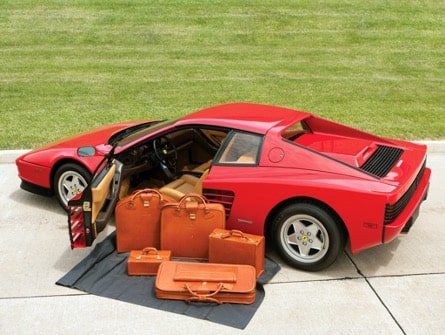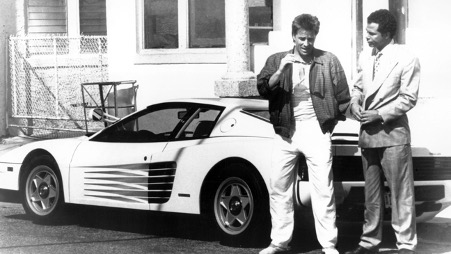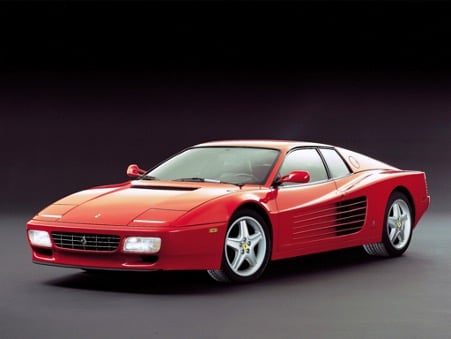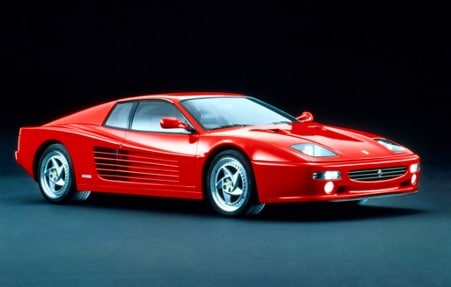In a colorful world of classic cars, there are many iconic machines. However, only a few can transcend the limits of the car world and become globally recognizable cultural objects, defining symbols of its time and everlasting design legends. The Ferrari Testarossa is one of those cars. With its striking looks, powerful V12 engine, and glorious soundtrack, this car still turns heads almost 40 years after its original release. As an essential part of Ferrari’s history, Testarossa will always be remembered as a top performer. Still, as a part of the 80s cultural landscape, Testarossa will forever be part of the automotive dreams of the generation which grew up in this decade. Today, we will tell you more about this legendary model.
Even though the Testarossa was introduced in the early ’80s, its story really begins in 1973 with the introduction of the Ferrari BB (Berlinetta Boxer). It was the first Ferrari model with a mid-mounted flat-12 engine which provided exceptional handling but had several flaws due to tight packaging. However, the Ferrari remained that the wide flat-12 engine was the right choice for their next GT model, so the development of Testarossa started in the late ’70s. The main goal was to make a car more comfortable than Berlinetta Boxer but also more powerful and faster. The chassis was thoroughly redesigned, as were the suspension and engine. As with almost all Ferrari’s designs, the legendary design house Pininfarina was responsible for the styling, and everything was set for debut.
That day in 1984, at Paris Motor Show, the audience was stunned by the new Ferrari model. The Testarossa was the show’s absolute star and the talk of the car community. With its distinctive design, low silhouette, wide rear end, and those unmistakable side vents, it was an immediate classic with looks that still appears fresh and exciting even after all this time. However, although the design stole the show, the mechanics were equally impressive. Behind the driver was a flat-12 engine with a naturally-aspirated, 4.9-liter engine. It had four camshafts and 48 valves and was lubricated by a dry sump system. The dry sump system was an exciting touch, dating back to when Ferrari first introduced the flat-12 engines as a racing unit in Formula One cars. The engine delivered 385 to 390 hp (depending on the market) with 361 lb-ft of torque which instantly put the Testarossa on the very top of the car market in the early ’80s with 0 to 60 mph time of 5.8 seconds and a top speed of 180 mph. The Ferrari already used the name “Testarossa” in the late ’50s for the gorgeous 250 Testarossa racing car; however, in this case, it was inspired by red cylinder head covers with Testa Rossa, meaning “redhead.”

Due to very positive reactions from the motoring press and Ferrari clients, the company was swept by orders making the waiting lists two years long despite the MSRP of over $85,000 in 1985. The Testarossa set the standards in its limited segment with excellent performance, impeccable handling, and drop-dead gorgeous looks. However, despite all that, this model had its share of flaws and quirks. Due to the wide engine, packaging was still a problem resulting in the width of the car of almost 2 meters (78 inches), making it difficult to maneuver in everyday traffic. The large turning circle didn’t help either, and all early models weren’t equipped with power steering. However, the steering was light, and the car was responsive once up to speed.

Specific engineering meant that maintenance was complex, and an ordinary job like camshaft belt replacement was an engine-out ordeal making it demanding and expensive. As an example of Testarossa’s quirks, the battery was hidden in the engine compartment, and in order to approach it, you have to remove the rear wheel. But, regardless of all that, customers loved the Testarossa, which was the favorite transportation of numerous celebrities of the era. People like Michael Jordan, O.J. Simpson, Rod Stewart, and Mike Tyson all owned a Testarossa (or a few of them). Talking about the popularity of the Testarossa is essential to mention two critical moments. One was the appearance in one of the quintessential ’80s TV shows – Miami Vice. The white 1986 Testarossa was used from the third season and soon became one the most recognizable cars in TV history. Besides that, the Testarossa was the car of choice in the popular video game “Out Run,” which defined arcade driving in the late ’80s. More recently, this Ferrari was used in many music videos, including legendary Kavinsky’s Autodrive.

Although the popularity and the sales of the Testarossa were steady, Ferrari knew there was still some room for improvement, so in 1991, it released a refreshed model called 512 TR. The name was derived from displacement (almost 5.0-liters), the number of cylinders (12), and TR as Testarossa. The car featured a new front end, bigger wheels, an improved interior, and a more powerful engine. The 512 TR delivered 420 hp and slightly more torque with a higher compression ratio and revised cylinder heads. However, additional power significantly improved acceleration with 4.8 seconds from 0 to 60 mph, pushing the car to 195 mph top speed.

But the end of the production of 512 TR in 1994 doesn’t mean that Testarossa’s story was over. Later that year, Ferrari introduced the final version of its flat-12 powered Gran Turismo coupe called F512 M with “M” standing for “Modificato.” This model had a thoroughly redesigned front and rear end, exposed headlights, round tail lights, and a unique wheel design. The interior was improved as well so was the engine. The flat-12 retained the displacement, but compression was slightly up to 10.4:1, which resulted in a 434 hp power rating. Few horsepower more meant that 0 to 60 mph time was further reduced to 4.7 seconds and the top speed was slightly higher at 196 mph.

However, the end of the Testarossa lineup came in 1996 when the last F512 M was delivered. With an overall production of nearly 10,000 examples (1984 to 1996), it was one of the best-selling Ferraris of all time. The original model, sold from 1984 to 1991, claimed the biggest portion of the sales (7,177 examples), while the elegant-looking 512 TR was produced in 2,261 copies and the last 501 cars were F512 M models. Interestingly, Ferrari officially never offered a convertible version, and only one Terstarossa drop-top was made, a silver 1986 model built for Fiat chairman, legendary Gianni Agnelli. Today, the Testarossa is a recognizable supercar from a fantastic era and one of the sure investments in the classic car world. It is still a fast and capable car that stuns the driver with its competent handling and analog performance.





